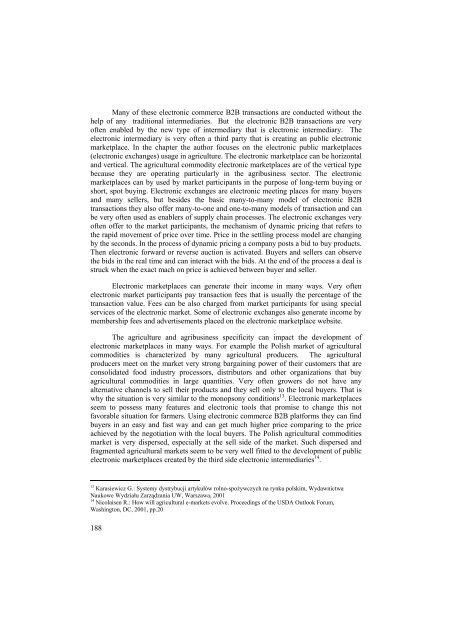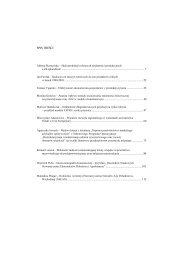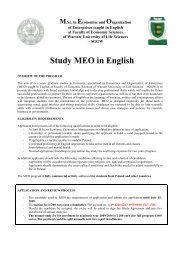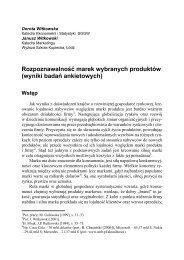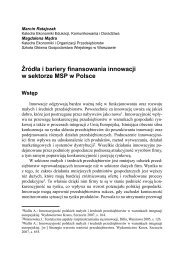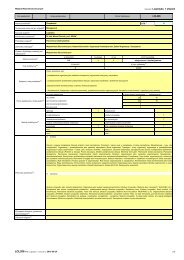pobierz - WydziaÅ Nauk Ekonomicznych SGGW w Warszawie
pobierz - WydziaÅ Nauk Ekonomicznych SGGW w Warszawie
pobierz - WydziaÅ Nauk Ekonomicznych SGGW w Warszawie
You also want an ePaper? Increase the reach of your titles
YUMPU automatically turns print PDFs into web optimized ePapers that Google loves.
Many of these electronic commerce B2B transactions are conducted without thehelp of any traditional intermediaries. But the electronic B2B transactions are veryoften enabled by the new type of intermediary that is electronic intermediary. Theelectronic intermediary is very often a third party that is creating an public electronicmarketplace. In the chapter the author focuses on the electronic public marketplaces(electronic exchanges) usage in agriculture. The electronic marketplace can be horizontaland vertical. The agricultural commodity electronic marketplaces are of the vertical typebecause they are operating particularly in the agribusiness sector. The electronicmarketplaces can by used by market participants in the purpose of long-term buying orshort, spot buying. Electronic exchanges are electronic meeting places for many buyersand many sellers, but besides the basic many-to-many model of electronic B2Btransactions they also offer many-to-one and one-to-many models of transaction and canbe very often used as enablers of supply chain processes. The electronic exchanges veryoften offer to the market participants, the mechanism of dynamic pricing that refers tothe rapid movement of price over time. Price in the settling process model are changingby the seconds. In the process of dynamic pricing a company posts a bid to buy products.Then electronic forward or reverse auction is activated. Buyers and sellers can observethe bids in the real time and can interact with the bids. At the end of the process a deal isstruck when the exact mach on price is achieved between buyer and seller.Electronic marketplaces can generate their income in many ways. Very oftenelectronic market participants pay transaction fees that is usually the percentage of thetransaction value. Fees can be also charged from market participants for using specialservices of the electronic market. Some of electronic exchanges also generate income bymembership fees and advertisements placed on the electronic marketplace website.The agriculture and agribusiness specificity can impact the development ofelectronic marketplaces in many ways. For example the Polish market of agriculturalcommodities is characterized by many agricultural producers. The agriculturalproducers meet on the market very strong bargaining power of their customers that areconsolidated food industry processors, distributors and other organizations that buyagricultural commodities in large quantities. Very often growers do not have anyalternative channels to sell their products and they sell only to the local buyers. That iswhy the situation is very similar to the monopsony conditions 13 . Electronic marketplacesseem to possess many features and electronic tools that promise to change this notfavorable situation for farmers. Using electronic commerce B2B platforms they can findbuyers in an easy and fast way and can get much higher price comparing to the priceachieved by the negotiation with the local buyers. The Polish agricultural commoditiesmarket is very dispersed, especially at the sell side of the market. Such dispersed andfragmented agricultural markets seem to be very well fitted to the development of publicelectronic marketplaces created by the third side electronic intermediaries 14 .13 Karasiewicz G.: Systemy dystrybucji artykułów rolno-spożywczych na rynku polskim, Wydawnictwa<strong>Nauk</strong>owe Wydziału Zarządzania UW, Warszawa, 200114 Nicolaisen R.: How will agricultural e-markets evolve. Proceedings of the USDA Outlook Forum,Washington, DC, 2001, pp.20188


